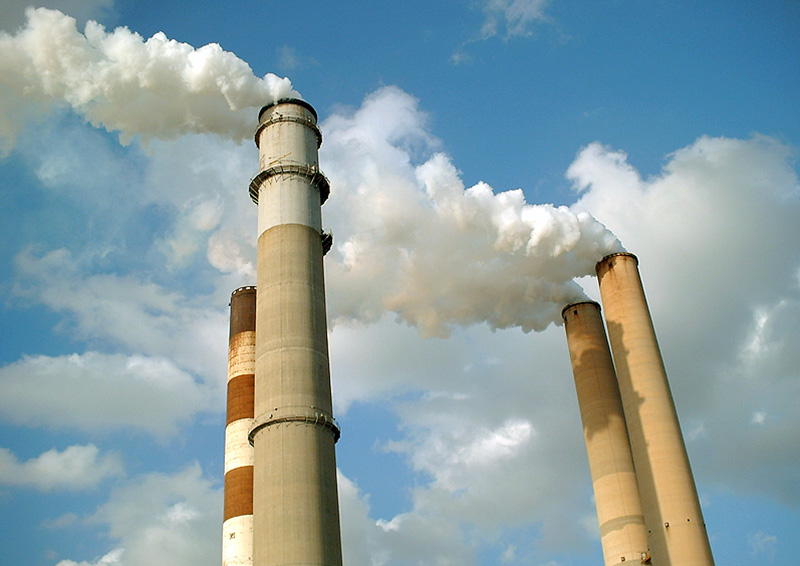Carbon emissions in the built environment
The term ‘carbon emissions’ refers to the release into the atmosphere of carbon dioxide (CO2).
Carbon dioxide is a naturally-occurring colourless and odourless gas that is integral to life. It is also a greenhouse gas and the burning of carbon-based fossil fuels means there is more carbon carbon dioxide in the atmosphere leading to increased rates of climate change.
Carbon-based fuels that release carbon dioxide when burned include timber, coal, gas, oil, petrol, diesel and so on.
The amount of carbon released by a particular event, person, building or thing is typically referred to as its ‘carbon footprint’, and is measured in tonnes of CO2. On a individual level, the main contributors to a carbon footprint include the amount of type of energy that is used to heat the home, the use of electrical appliances, type of transport, amount of air travel, and so on.
The Building Regulations set out requirements for specific aspects of building design and construction. Regulation 26 of the building regulations states that 'where a building is erected, it shall not exceed the target CO2 emission rate for the building…'.
The target CO2 emission rate (TER) sets a minimum allowable standard for the energy performance of a building and is defined by the annual CO2 emissions of a notional building of same type, size and shape to the proposed building. TER is expressed in annual kg of CO2 per sq. m.
Energy performance certificates (EPCs), set out the energy efficiency rating of buildings. They are required when buildings are built, sold or rented, if they have a roof and walls and use energy to condition an indoor climate.
The establishment of the Climate Change Act 2008 committed the UK to reducing greenhouse gases by at least 80% by 2050 (compared to the 1990 baseline), with a reduction of at least 34% by 2020. A strategy for how this was to be achieved was set out in The Carbon Plan published in December 2011.
The commitment to reducing carbon emissions is a considerable, and often controversial, factor in the development of major infrastructure projects such as the third runway at Heathrow Airport, with activists arguing that its construction will tie the UK into an increased rate of emissions for many years.
In December 2006, the then Labour government committed that from 2016 all new homes would be ‘zero carbon’ and introduced the Code for Sustainable Homes, against which the sustainability of new homes could be rated. However, on 10 July 2015, the government published ‘Fixing the foundations: creating a more prosperous nation’ which made the surprising decision to scrap the zero carbon homes initiative.
[edit] Related articles on Designing Buildings
- Carbon capture and storage.
- Carbon capture processes.
- Carbon dioxide.
- Carbon dioxide equivalent.
- Carbon emissions reduction target CERT.
- Carbon factor.
- Carbon footprint.
- Carbon negative.
- Carbon neutral.
- Carbon Plan.
- Carbon ratings for buildings.
- Consumption emissions.
- Emission factor.
- Fugitive emissions.
- Greenhouse gases.
- Net zero carbon building.
- Operational emissions.
- Process carbon dioxide emissions.
- Reducing UK emissions: 2018 Progress Report to Parliament.
- Residual emissions.
- Target emission rate.
- The Carbon Project: improving carbon emission data.
- Upfront emissions.
- Zero net regulated carbon emissions.
Featured articles and news
Infrastructure that connect the physical and digital domains.
Harnessing robotics and AI in challenging environments
The key to nuclear decommissioning and fusion engineering.
BSRIA announces Lisa Ashworth as new CEO
Tasked with furthering BSRIA’s impressive growth ambitions.
Public buildings get half a million energy efficiency boost
£557 million to switch to cleaner heating and save on energy.
CIOB launches pre-election manifesto
Outlining potential future policies for the next government.
Grenfell Tower Inquiry announcement
Phase 2 hearings come to a close and the final report due in September.
Progress from Parts L, F and O: A whitepaper, one year on.
A replicated study to understand the opinion of practitioners.
ECA announces new president 2024
Electrical engineer and business leader Stuart Smith.
A distinct type of countryside that should be celebrated.
Should Part O be extended to existing buildings?
EAC brands heatwave adaptation a missed opportunity.
Definition of Statutory in workplace and facilities management
Established by IWFM, BESA, CIBSE and BSRIA.
Tackling the transition from traditional heating systems
59% lack the necessary information and confidence to switch.
The general election and the construction industry
As PM, Rishi Sunak announces July 4 date for an election.
Eco apprenticeships continue help grow green workforce
A year after being recognised at the King's coronation.
Permitted development rights for agricultural buildings
The changes coming into effect as of May 21, 2024.






















